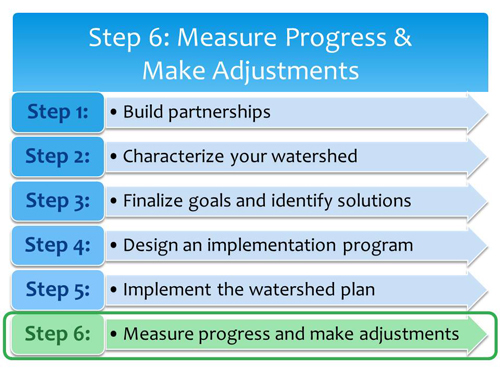Step 6: Measure Progress and Make Adjustments
Review and Evaluate
Once you have started to implement your watershed plan, you need to monitor both water quality and land treatment to ensure smooth implementation and to measure progress toward meeting goals. You need to create decision points at which you’ll review information and then decide whether to make changes in your program or stay the course. As part of your evaluation efforts, you will periodically review the activities included in your work plan and the monitoring results to determine whether you are making progress toward achieving your goals. And over time you may need to update your plan.
You should review the implementation activities outlined in your work plan, compare results with your interim milestones, provide feedback to stakeholders, and determine whether you want to make any corrections. These reviews should address several key areas:
- The process being used to implement your program. This process includes the administrative and technical procedures used to secure agreements with landowners, develop specifications, engage contractors, and the like.
- Progress on your work plan. Check off items in your annual work plan that have been completed.
- Implementation results. Report on where and when practices have been installed and have become operational.
- Feedback from landowners and other stakeholders. Review information on the stakeholders’ experience with the implementation process and with operation and maintenance of the practices.
![[logo] US EPA](https://www.epa.gov/epafiles/images/logo_epaseal.gif)






